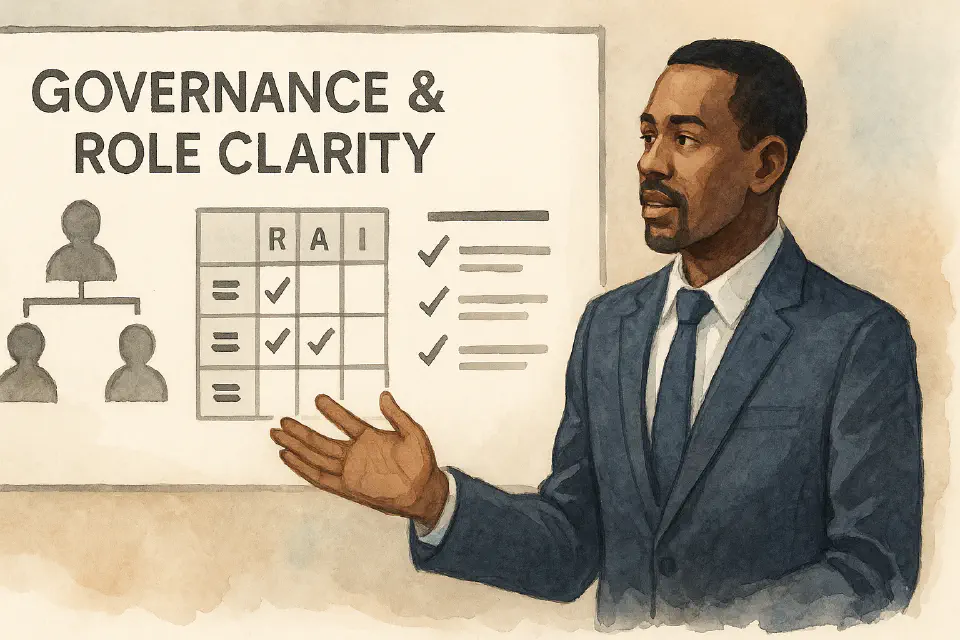
Governance & Role Clarity in HR Models
An HR model without governance is just a theory. Real impact requires clear roles, decision rights, and accountability across the function.
You can have a great HR model on paper—CoEs, HRBPs, shared services, agile squads—but without governance and role clarity, it won’t work in practice.
Misalignment leads to:
- Duplication of effort
- Gaps in service delivery
- Delays and confusion
- Frustrated employees and HR teams
That’s why governance is the backbone of any effective HR operating model.
Common Pitfalls in Governance
- Lack of clarity on who decides what
- Competing priorities across HR silos
- Excessive centralization or fragmentation
- Underused CoEs or overwhelmed BPs
- No mechanisms for resolving conflicts or aligning resources
Foundations of Effective HR Governance
Defined Roles and Responsibilities
- Each HR function knows its scope, interfaces, and decision rights.
- Documented and shared across the organization.
Governance Forums
- Regular forums to align HR priorities, surface conflicts, and track outcomes (e.g. HRLT meetings, project steering groups).
Decision Rights Matrix (RACI)
- For key processes: who is Responsible, Accountable, Consulted, Informed.
HR Operating Principles
- Shared rules for how HR works (e.g. “Think enterprise-first”, “Design with the user”, “Build once, scale globally”).
Role Clarity in Practice
Let’s take the example of Talent Acquisition:
| Activity | Who Leads | Notes |
|---|---|---|
| Sourcing strategy | CoE | Develops enterprise-wide tools |
| Recruiting operations | Shared Services | Runs scheduling and offers |
| Hiring needs discussion | HRBP + Business | Joint accountability |
| Diversity hiring targets | CoE + HRBP | Shared planning, local delivery |
Role clarity ensures speed, accountability, and trust.
Governance for Agility
Agile organizations often fear governance will slow them down. But lightweight, clear governance enables agility by:
- Defining guardrails
- Accelerating decision-making
- Reducing rework
- Empowering local teams
Adapting Governance Over Time
As HR evolves, governance must evolve too:
- Periodically review governance structures.
- Sunset roles or forums that no longer add value.
- Involve frontline HR and business voices in design.
Good governance is visible when it works, and painful when it doesn’t.
Final Thought
Clarity isn’t bureaucracy—it’s an enabler of focus, trust, and impact. The most innovative HR teams operate with freedom within a framework. And that framework is built on clear governance.